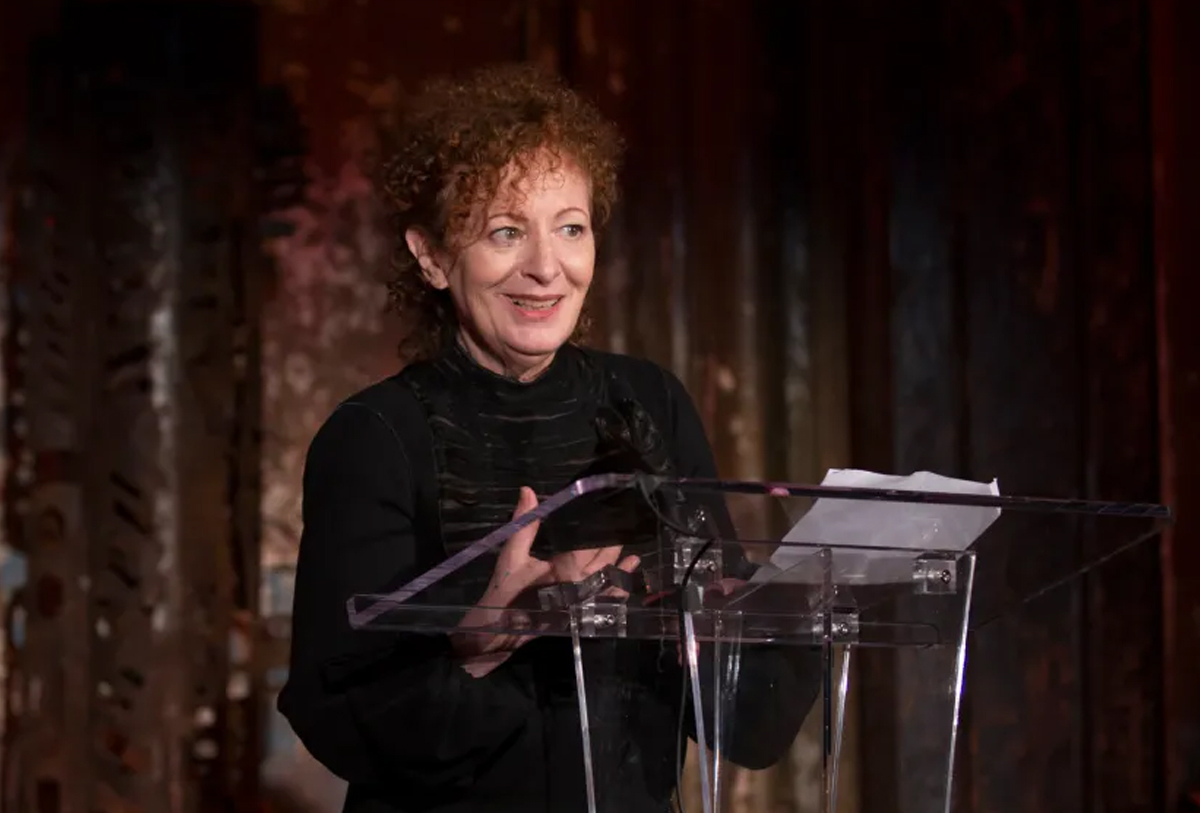
Nan Goldin has added yet another grand award to her illustrious career. The legendary American photographer has won the Kering Women in Motion Prize of Photography at this year’s Les Rencontres d’Arles festival in France.
The French luxury group Kering recognized Nan Goldin for her “intimate and raw portraits” that shine a light on themes often sidelined in mainstream art, such as domestic violence, gender identity, and the lives of those existing outside the margins.
She received the award on July 8 at the Théâtre Antique in Arles, where she also presented a new exhibition and spoke about her decades-long relationship with the city.
Kering hugely praised the long-term cultural influence of Goldin when announcing the award.
“Through her work, Nan Goldin has recast the representation of women outside of patriarchal norms, but also of overlooked communities,” the French luxury group said. “By denouncing oppression and celebrating emancipation, Goldin shows her unwavering commitment.”
The Kering Women in Motion program began in 2015 to highlight women in film, later expanding into photography in 2019. Its photography prize pays tribute to a woman with a significant career in the field and includes funding to acquire works for the Rencontres d’Arles Collection.
She also joins a distinguished list of previous recipients, including Susan Meiselas, Sabine Weiss, and Ishiuchi Miyako.
Nan Goldin’s latest work, Stendhal Syndrome, was exhibited at the Saint-Blaise Church in Arles as part of the festival. The piece is a multimedia slideshow that places portraits of her friends and lovers alongside classical, Renaissance, and Baroque masterpieces.
Inspired by Ovid’s Metamorphoses, the work reimagines personal figures as mythological ones like Galatea, Orpheus, and Hermaphrodite. Her voice overlays the piece, accompanied by a custom soundtrack from Soundwalk Collective and music by Mica Levi.
The result is a visceral interpretation of the Stendhal syndrome, the overwhelming emotional response some feel when confronted with extreme beauty.
Speaking of the relevance of the award, Nan Goldin was also categorical in indicating the personal importance of the venue.
“This award is such a great honor. I’m proud to be associated with such great women photographers whom I admire and respect,” she said.
“I have a long history with Arles, particularly in the 1980s, which had a profound effect on me and my work early in my career. I’ve returned to Arles several times since then, and I’m thrilled to be back.”
Her bond with Arles dates back to her early career, when she began gaining international attention for her bold and daring visual language. Her time in the city also helped shape her evolving perspective on photography and storytelling.
Born in Washington, D.C. in 1953, Nan Goldin has spent over four decades chronicling personal and political truths through photography. Her seminal work, The Ballad of Sexual Dependency (1980–1986), remains one of the most unfiltered portraits of love, loss, power, and addiction.
In recent years, Nan Goldin has also become a prominent activist. She founded PAIN (Prescription Addiction Intervention Now), a group that protested the Sackler family’s involvement in the opioid crisis, pushing major art institutions to divest from their funding.
Not only that, her influence has stretched into the fashion world, too. A recent Gucci campaign, shot by her, was recognized at the British Fashion Awards, underscoring her continued relevance across industries.
Nan Goldin’s current retrospective, This Will Not End Well, will travel to Pirelli Hangar Bicocca in Milan this fall. The exhibition will then close at the Grand Palais in Paris in 2026, another major marker in a career that shows no signs of slowing.
By honoring her work, Kering doesn’t just celebrate a body of work. It acknowledges a shift in how photography reflects and reshapes our understanding of desire and power.
And for Nan Goldin, the Women in Motion prize feels less like a capstone than a continuation. A reminder that the stories that matter most are often those hiding in plain sight, waiting for someone brave enough to see them.
Share this article: